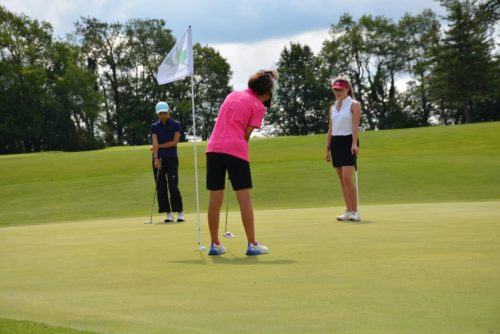Golf Ontario builds trust and relationships with regional sustainability model
 Golf Ontario is piloting a four-year regional sustainability strategy in three areas of the province, with plans to further expand once the pilot has concluded. The project aims to bring together national, provincial, and local sport organizations to foster relationships and implement the principles of Long-Term Development in Sport and Physical Activity.
Golf Ontario is piloting a four-year regional sustainability strategy in three areas of the province, with plans to further expand once the pilot has concluded. The project aims to bring together national, provincial, and local sport organizations to foster relationships and implement the principles of Long-Term Development in Sport and Physical Activity.
“This is something that’s been missing in the sport system and in the golf sector specifically, and we feel our future success as a provincial sports organization and industry relies on taking care of people at that club level,” said Kyle McFarlane, Senior Director of Golf Operations for Golf Ontario.
His organization currently oversees more than 480 golf courses and 94,000 amateur golfers, which comes with significant communication and collaboration hurdles. The regional sustainability strategy strives to close some of those gaps, bringing the facilities into a closer relationship with their provincial sport organization (PSO), Golf Ontario, and their national sport organization (NSO), Golf Canada. It provides staff and programming resources, and encourages facilities to work together to create regional initiatives for the betterment of all.
“Our focus is to dive into a region of Ontario and build a small industry group or community around golf that includes all stakeholders. This is a new foray for us, where we have the PSO actually have their boots on the ground directly where the clubs are in order to create an environment where everybody has a part,” he said.
“This isn’t a top-down approach. It’s a bubbling up from the bottom where the clubs share their challenges, then act as facilitators and provide resources that address particular needs in a certain regional community.”
According to McFarlane, it works like a marriage.
“It’s like a relationship, where you may want to buy a first house or have kids, all these life-altering decisions, but they don’t happen after the first date. Once you’ve built the trust, then the relationship gets easier. The walls come down and you’re able to share and take risks together,” he said.
When the model was first being rolled out and introduced, Golf Ontario had to deal with the struggle between “Turf war versus trust”, as facilities didn’t know whether to protect their assets or willingly share with other organizations in the region. They had to be convinced that a collective strategy was the right way to move forward.
Sport for Life’s Director of Quality Sport Carolyn Trono wasn’t surprised to hear there was reluctance to embrace the new approach, but applauds Golf Ontario for forging ahead.
“We see this with many organizations, where people’s livelihoods are connected to participation and membership,” she said. “And business is typically competitive, built on a scarcity model.”
Now that Golf Ontario is multiple years into the plan, they’re starting to see some of their ideas and strategies bear fruit. Many of the changes are subtle, but can be deceptively wide-reaching in their implications. Staff members are shared between organizations, and facilities work together on common projects. They work with facilities to create trusted relationships with both the PSO and each other, then enter into what they’re calling the Facility Partnership Pathway. 
“The idea around this collaboration and relationship model is that at the very root of this is sharing best practices. So if one facility is doing something better than the other, why don’t we all do this better?” he said, articulating one of the primary principles of LTD 3.0: collaboration in action, for the benefit of participants.
Some of the additional programming being offered now, thanks to this project, includes participation programming specifically for women, new Canadians, and youth. This directly addresses some of the identified gaps in their membership as an industry, based on evidence and research. And because they have the numbers to back up their claims, facilities can trust that they’re making decisions based on demonstrable facts. They’ve also seen an uptick in participant numbers since the beginning of the pandemic, as other sports have been inaccessible.
“There’s a big spike right now of new, young golfers. If you look at the typical sport pyramid, it starts with a large base of youth beginning the sport at an early age, then weaning off as they get older, but golf is the opposite. Golf has typically attracted more participants as they get older because it’s a sport they can play for life. We’re trying to widen our pyramid’s base by getting more youth into golf at a younger age.”
The work Golf Ontario has been doing is drawing attention across the country. According to Trono, this is exactly the sort of implementation work she’d love to see other organizations tackle.
“This is an exciting approach to sport development whereby there is authentic listening and actions based on the needs of those at the local level,” she said. “We look forward to hearing more from Golf Ontario and how this approach can improve the golf experience for everyone.”


